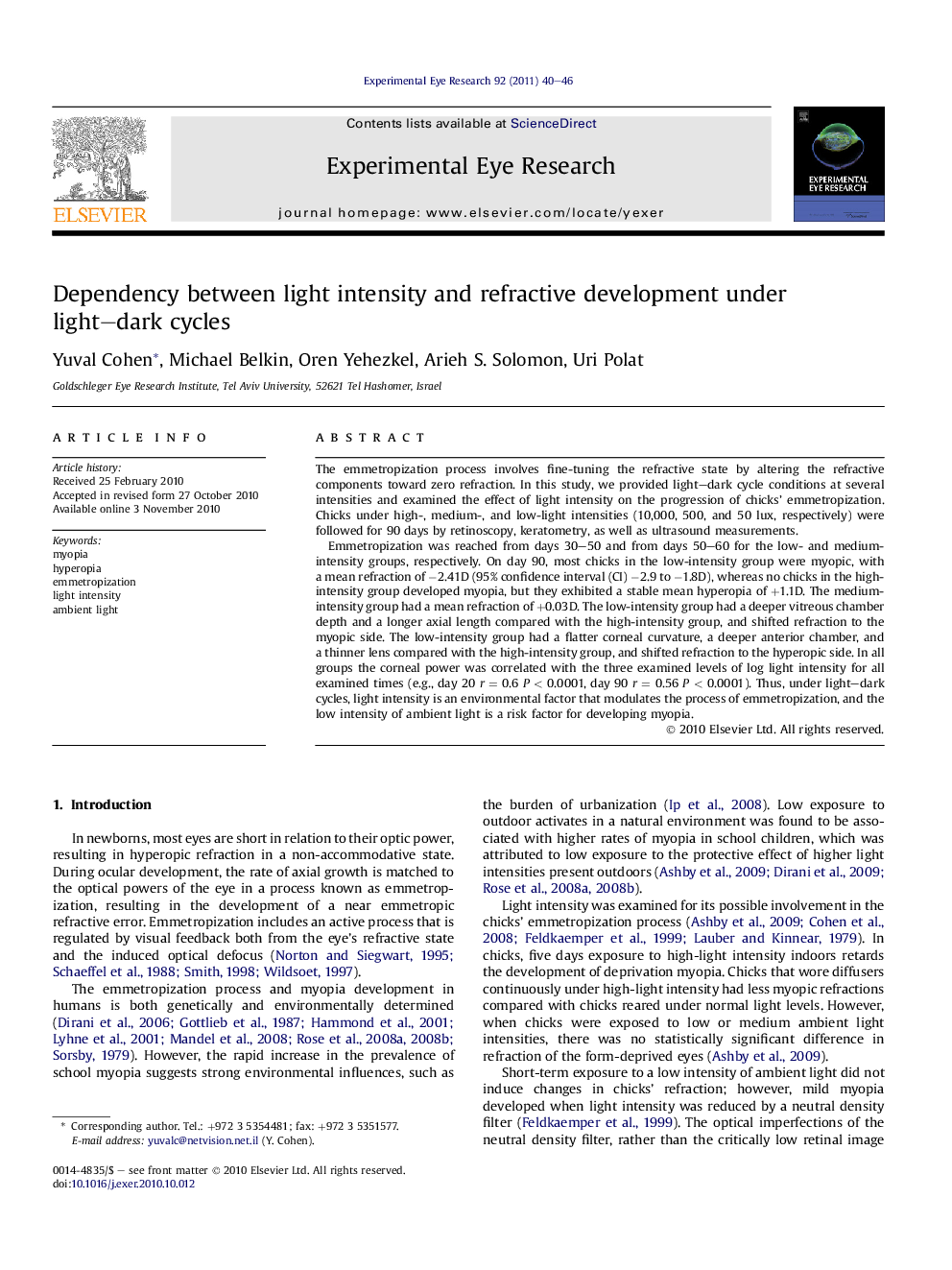| Article ID | Journal | Published Year | Pages | File Type |
|---|---|---|---|---|
| 6197485 | Experimental Eye Research | 2011 | 7 Pages |
The emmetropization process involves fine-tuning the refractive state by altering the refractive components toward zero refraction. In this study, we provided light-dark cycle conditions at several intensities and examined the effect of light intensity on the progression of chicks' emmetropization. Chicks under high-, medium-, and low-light intensities (10,000, 500, and 50 lux, respectively) were followed for 90 days by retinoscopy, keratometry, as well as ultrasound measurements.Emmetropization was reached from days 30-50 and from days 50-60 for the low- and medium-intensity groups, respectively. On day 90, most chicks in the low-intensity group were myopic, with a mean refraction of â2.41D (95% confidence interval (CI) â2.9 to â1.8D), whereas no chicks in the high-intensity group developed myopia, but they exhibited a stable mean hyperopia of +1.1D. The medium-intensity group had a mean refraction of +0.03D. The low-intensity group had a deeper vitreous chamber depth and a longer axial length compared with the high-intensity group, and shifted refraction to the myopic side. The low-intensity group had a flatter corneal curvature, a deeper anterior chamber, and a thinner lens compared with the high-intensity group, and shifted refraction to the hyperopic side. In all groups the corneal power was correlated with the three examined levels of log light intensity for all examined times (e.g., day 20 r = 0.6 P < 0.0001, day 90 r = 0.56 P < 0.0001). Thus, under light-dark cycles, light intensity is an environmental factor that modulates the process of emmetropization, and the low intensity of ambient light is a risk factor for developing myopia.
Research highlights⺠We provided light-dark cycle conditions at high-, medium-, and low-light intensities and examined the effect of ambient light intensity on the progression of chicks' emmetropization. ⺠Light intensity under diurnal cycles plays a major role in modulating refraction, corneal curvature and thickness, anterior chamber depth, lens thickness, vitreous chamber depth, and axial length throughout the emmetropization process. ⺠Dim ambient light is an environmental risk factor for the development of myopia.
